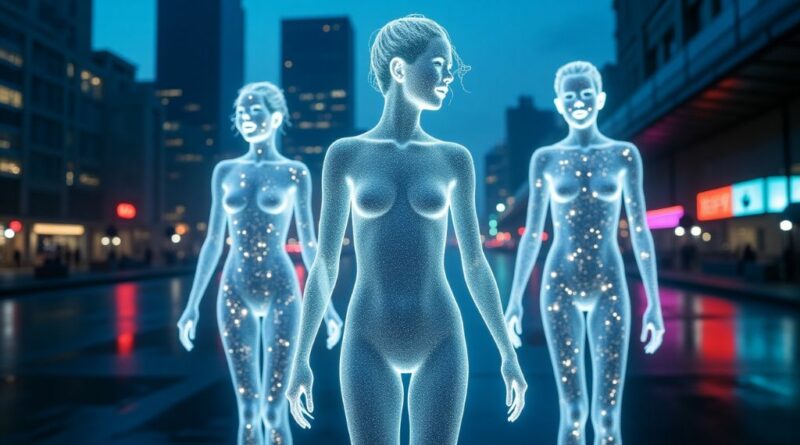Holograms You Can See, Hear, and Touch
Imagine a world where vibrant, three-dimensional images hover before your eyes—no clunky glasses required. Picture yourself reaching out to feel the contours of a digital object or hearing whispers emanating from a floating scene. This isn’t science fiction; it’s the dazzling reality being crafted by researchers at the University of Sussex with their Multimodal Acoustic Trap Display (MATD). This pioneering technology is redefining how we interact with digital displays, blending sight, sound, and touch into an experience that feels tantalisingly close to the real thing.
A Leap Beyond Holograms
Unlike the holograms you’ve seen in films—shimmering illusions tethered to specific angles—the MATD offers something far more dynamic. By harnessing ultrasound waves, this system traps tiny particles and propels them through space at breakneck speeds, sketching out vivid 3D images visible from every perspective. It’s a bit like watching an artist paint in mid-air, except the brushstrokes are particles choreographed by sound waves, and the canvas is the very air around you.
The secret sauce? A nod to the past. The MATD borrows from the scanning techniques of vintage televisions, moving a single coloured particle rapidly through a three-dimensional grid. Bathed in red, green, and blue light, this particle dances so swiftly that your eyes, thanks to the persistence of vision, perceive a seamless, full-colour image. The result is a floating visual that’s as mesmerising as it is revolutionary.
More Than Meets the Eye
But the MATD isn’t content with merely dazzling your eyes. This technology goes further, weaving sound and touch into the mix. Those same ultrasound waves that sculpt the visuals can be fine-tuned to generate audible tones and tactile feedback. Imagine a fluttering butterfly hovering before you: not only do you see its wings in vivid detail, but you hear their faint rustle and feel a gentle breeze as they flap. It’s an immersive leap forward, bringing us tantalisingly close to what tech visionaries call the “Ultimate Display”—a future where digital and physical realities blur into one.
The Possibilities Are Endless
So, what could this mean for you and me? Picture gaming without screens, where characters leap into your living room, their footsteps echoing as you feel the thud of their boots. Or consider education: students could explore a beating heart in mid-air, hearing its rhythm and tracing its chambers with their fingertips. Even the creative arts could transform, with artists sculpting interactive 3D installations that engage every sense.
The team at Sussex isn’t stopping here. They’re pushing the boundaries of acoustic technology, aiming to refine the MATD’s precision and scale. Could we one day see entire rooms filled with these floating displays, turning our homes into galleries of living art? It’s not hard to imagine a world where flat screens feel as outdated as black-and-white TVs.
A Glimpse of Tomorrow
The Multimodal Acoustic Trap Display isn’t just a clever trick—it’s a glimpse into a future where technology doesn’t just sit on a desk or hang on a wall, but lives and breathes around us. It’s bold, it’s beautiful, and it’s oh-so-close to rewriting how we experience the digital world. So next time you’re scrolling through a flat, lifeless screen, spare a thought for the day when images might leap out to greet you, whispering secrets you can feel in your bones. That day, thanks to Sussex’s brightest minds, is closer than you think.
We’d love your comments on today’s topic!
For more articles like this one, click here.
Thought for the day:
“Of all possessions a friend is the most precious.” Herodotus



